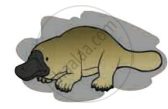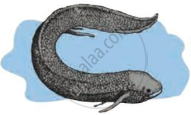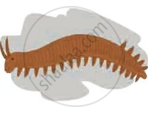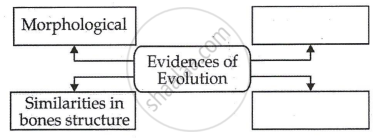Advertisements
Advertisements
प्रश्न
Similarities in the initial stages indicate the _______ evidence.
पर्याय
Connecting links
Anatomical
Embryological
Palaeontological
उत्तर
Similarities in the initial stages indicate the Embryological evidence.
APPEARS IN
संबंधित प्रश्न
What are vestigial organs?
Given below is the list of vegetables available in the market. Select from these the two vegetables having homologous structures:
Potato, sweet potato, ginger, radish, tomato, carrot, okra (Lady’s finger)
(A) Potato and sweet potato
(B) Radish and carrot
(C) Okra and sweet potato
(D) Potato and tomato
“Two areas of study namely 'evolution' and 'classification' are interlinked'. Justify this statement.
Enlist any four sequential evolutionary names of human ancestors.
The presence of which of the following types of organs in two animals indicates that they are not derived from a common ancestor?
(a) homologous organs
(b) excretory organs
(c) analogous organs
(d) reproductive organs
X, Y, and Z are three animals. The animal X can fly but animal Y can only run on ground or walls. The forelimbs of animals X and Y have the same basic design but they are used for different purposes such as flying and running respectively. The animal Z became extinct an long time ago. The study of fossils of Z tells us that it had some features like those of X and some like those of Y. In fact, Z is said to form a connecting link in the evolutionary chain of X and Y.
(a) What could the animals X, Y and Z be?
(b) What name is given to the forelimbs like those of X and Y which have the same basic design but different functions?
(c) Name one feature in which Z resembled X.
(d) Name one feature in which Z resembled Y.
(e) Which is the correct evolutionary chain involving X, Y and Z : X → Z → Y or Y → Z → X?
Write short notes based upon the information known to you.
Connecting link
Explain with suitable examples importance of anatomical evidence in evolution.
“Appearance of melanised moths post-industrialisation in England is a classic example of evolution by natural selection.” Explain.
Draw a labelled diagram of T.S. of a leaf showing Kranz anatomy.
What do you mean by vestigial structures? Name four vestigial organs found in man.
Define fossil.
Very short answer question:
What is vestigeal organ?
Find an odd one out.
Name the parts shown in the diagram.
Human jaw

Enlist the evidences of evolution.
Which evidence of evolution is shown in the given picture? Explain the importance of this evidence.

Write the answers to the questions by observing the figure below.
 |
 |
 |
| (a) | (b) | (c) |
- Write the name of the animal ‘(a)’ in the figure.
- Write the name of the animal ‘(b)’ in the figure.
- Write the name of the animal ‘(c)’ in the figure.
- Which evolutionary evidence is illustrated by this figure?
- Write the definition of that evidence for evolution.
The degenerated and non-functional organs found in an organism are called ______.
How do you differentiate homologous organs from analogous organs?
Select the CORRECT match.
Cucurbits do not develop thick and woody stem as they are:
Tendons and ligaments are examples of ______.
Study of fossils is ______.
Evolutionary convergence is the development of:
The process of mating of individuals, which are more closing related than the average of the population to which they belong is called ______.
The study of fossil evidence of evolution is called ______
Animal husbandry and plant breeding programmes are the examples of ______.
Complete the following diagram:

Complete the following chart:

As shown in figure below some organisms that share a common ancestor have features that have different functions, but similar structures.

These are known as ______. Give example.
Write down the difference between homologous and analogous organs.
Evolutionary convergence is the development of a ______.
Write a note on the significance of Palaeontology.
Complete the following conceptual picture:

Give examples of homologous organs and analogous organs in plants.
